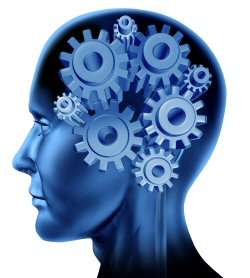Symptoms of Borderline Personality Disorder and How to Deal with It

Individuals who suffer from borderline personality disorder (BPD) often have
mood swings and are unable to control their thoughts and emotions. They are also
impulsive and display reckless behavior often. These two symptoms make it hard
for them to keep relationships. What are other symptoms of borderline
personality disorder and how can victims and their loved ones help?
Symptoms of Borderline Personality Disorder
A person with borderline personality disorder possesses at least five of
these symptoms.
-
 Depression. Depression.
- Uncontrollable or unstable relationships. This includes a lot of
misunderstandings and conflict with family members and friends.
- Unstable self-image or distorted self-worth. This symptom may push one
to quickly change plans and goals in life may it be a big or small decision.
- Impulsive behaviors. People with borderline have the tendency to abuse
substances, spend a lot of money at a time as well as binge.
- Repeated suicidal behavior.
- Mood swing episodes. Changing in mood may be for a few hours or a few
days.
- Unable to control temper.
Paranoia and stress. Individuals who have this condition may also become
paranoid whenever stressed over small things. They may suffer from anxiety over
temporary separation from family or loved ones. Aside from that, they are also
very sensitive and may falsely think that a person is angry. Negative words have
extreme negative effect to borderline individuals.
Borderline Personality Disorder and Suicide
A borderline may have recurring suicide attempts as well as self-harm (also
pertained to as self-mutilation). Less than 10% of people who suffer from
borderline actually commit suicide. Some people with BPD harm themselves without
the desire to die. They self-harm by cutting, hitting, burning, head banging or
hair pulling. Individuals who self-harm may not always view this behavior as
dangerous to them although it is often life threatening. All individuals who
self-harm claim that the behavior helps them release the emotional pain they are
suffering from. Some people may not understand but self-harming shifts the focus
of the victim from the emotional to physical pain, which is more bearable. Other
times, individuals with BPD would self-harm to punish themselves.
When does BPD start and what are its causes?
 Borderline Personality Disorder, or (BPD) may start as early as childhood. However, most cases are diagnosed during
adolescence. BPD can be genetic or can be influenced by the environment. Studies
show that abnormal serotonin (a type of a hormone) gene variation causes BPD.
Abnormality in serotonin is the reason why sufferers are often depressed,
aggressive, moody and impulsive. The abnormality also causes individuals with
BPD to perceive pain improperly. When serotonin level becomes low, an individual
may become more impulsive and self-destructive. People with BPD have different
limbic system structure compared to individuals who are mentally healthy.
Individuals who suffer with the disorder have abnormal brainwaves. Other tests
also prove that sufferers have impaired sound interpretation, vision and memory. Borderline Personality Disorder, or (BPD) may start as early as childhood. However, most cases are diagnosed during
adolescence. BPD can be genetic or can be influenced by the environment. Studies
show that abnormal serotonin (a type of a hormone) gene variation causes BPD.
Abnormality in serotonin is the reason why sufferers are often depressed,
aggressive, moody and impulsive. The abnormality also causes individuals with
BPD to perceive pain improperly. When serotonin level becomes low, an individual
may become more impulsive and self-destructive. People with BPD have different
limbic system structure compared to individuals who are mentally healthy.
Individuals who suffer with the disorder have abnormal brainwaves. Other tests
also prove that sufferers have impaired sound interpretation, vision and memory.
Some BPD sufferers develop the disorder due to childhood trauma. These
traumas can be caused by rejection (especially by parents), verbal and emotional
abuse, physical abuse and sexual abuse. Almost 70% of the population of
individuals who were diagnosed with BPD was sexually abused as a child.
Treatments for BPD
Because of BPD’s link to the physical brain, medical researchers have found
that antidepressants such as Prozac can increase the serotonin level and thus
temporarily eliminate mood swings, depression, anxiety and suicidal thoughts.
However, there are no medications that are currently prescribed to actually
treat BPD. Along with antidepressants, individuals with BPD are treated with
psychotherapy, also known as “talk therapy”. Different types of psychotherapy
include one-on-one or group sessions. Below are four of the major types of
psychotherapy often used for BPD.
- Dialectal Behavior Therapy (DBT) - DBT proved to be one of the best ways to
treat BPD. DBT helps sufferers by introducing them to new skills which they can
use to control unhealthy emotions. Skills training include emotional
regulation skills, distress tolerance skills, interpersonal effectiveness
skills and mindfulness meditation skills. Clients are encouraged to apply
their new learned skill every day and their advancement is monitored during
therapy.
- Transference-Focused Therapy - This therapy focuses on how a BPD
sufferer can have healthier relationships. The BPD sufferer is asked to talk
about present events and how he or she reacts or deals with it. In this type of
therapy, the therapist barely talks or discusses what the client must do. This
way, the client’s emotion can be transferred to the therapist. After the
therapist feels the client’s emotions, the therapist can be able to guide the
person to establish firm relationships.
- Mentalization-Based Psychotherapy - This therapy helps BPD sufferers realize
and understand his or her own as well as other people’s mental circumstances.
The developers of this type of therapy, Peter Fonagy and Anthony Bateman,
believe that people who have BPD are unable to mentalize because of their
childhood history. The ability to mentalize starts during childhood, and if a
person has weak childhood relationships, the development of this ability is
disrupted.
- Schema-Focused Psychotherapy - This type of psychotherapy helps clients to
alter their unhealthy and damaging manner of thinking. Aside from that, this
therapy can also help people with BPD to effectively control or vent their anger
the right way. Schema-focused psychotherapy can also help clients to stop their
unhealthy behaviors. Early childhood rejection causes BPD sufferers to have
distorted ways of interpreting the events that occur around them as well as
debilitated interactions with other people.
How to Deal with the Symptoms of BPD
Knowing the causes of the disorder can help you make your first step to
healing. Along with therapy sessions, these are some of the things you can do to
help yourself:
-
 Communicate with your doctor regarding therapy preferences and stick to
it. Communicate with your doctor regarding therapy preferences and stick to
it.
- Keep a strict schedule of sleep as well as meal times.
- Lessen your stress with regular exercise.
- Set your priorities and make sure your goals are realistic.
- Start spending more time with your friends and families and make it a habit
to confide to a trusted person.
- Be open to others by telling them what events can trigger your symptoms.
That way, they can help you by trying to minimize the things that can stress you
out.
- Don’t expect that your BPD will be gone immediately. Healing takes time.
You can talk to your personal or family doctor about BPD as well. There are
also mental health professionals out there (psychiatrists, mental health
counselors, social workers and psychologists) who you can talk to regarding BPD.
How to Deal with someone who has BPD
BPD is like a ripple that affects the people around its sufferer. Getting the
right diagnosis of the symptoms is one way of helping someone with BPD. Keep
encouraging your friend or relative to stick with the therapy. Aside from
encouragements, friends and loved ones of people with BPD will help a lot by
giving emotional support, patience as well as understanding. Like the ones with
BPD, learning about the disorder can help you understand what your family or
friend is going through. Some people make a mistake by ignoring individuals who
harm themselves or even mention suicide. Self-mutilation is not people’s way of
getting the attention they want. It’s a silent scream for help, do not wait
until it is too late!
Diseases & Conditions
Top Lists:
Top 10 Most Common Genetic Disorders
Top 15 Most Disturbing Skin Conditions
10 Unusual Phobias
Informational:
Diverticular Disease and Diverticulitis
What is Turner Syndrome and Why Does it Affect Only Females?
Alice in Wonderland Syndrome and How to Treat the Symptoms
Herniated Disc: Symptoms and Treatments
Pinch Nerve: The Cause of Remote Pain
Dealing With a Child Who Has a Fever
How Unhealthy Diet Could Trigger Inflammatory Arthritis
Phobias: Understanding How They Develop and Treatments
Depression Facts, Symptoms & Treatment
Earaches - Causes and Treatments
Symptoms of Borderline Personality Disorder and How to Deal with It
Seasonal Affective Disorder: Does Light Therapy Help?
What Really Causes Dandruff and How Can You Treat the Symptoms
Treating Plantar Fasciitis or Heel and Arch Pain
Symptoms and Treatments of Aplastic Anemia
Using Sclerotherapy to Get Rid of Varicose Veins
Are the Side Effects of HGH Supplements Worth It?
ADD/ADHD Symptoms and Treatment
What are the Options for Hair Loss Treatments
Options for Frontal Hair Loss Treatment |